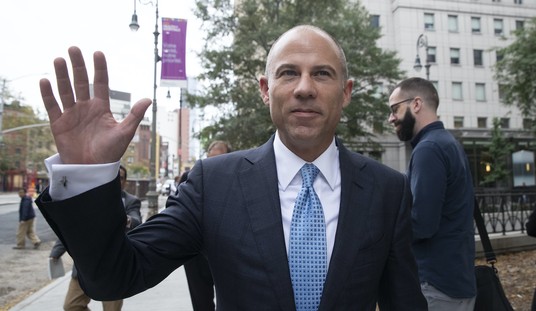“New Houses were built in every direction; an illusory prosperity shone over the land, and so dazzled the eyes of the whole nation, that none could see the dark cloud on the horizon announcing the storm that was too rapidly approaching.”
—Charles Mackay, Extraordinary Popular Delusions and the Madness of Crowds
It wasn’t that long ago that I was having lunch with the father of a friend at Mory’s, the venerable dining club at Yale, and he said to me: “Do you realize, Roger, that tuition at Yale next year will be $10,000? Ten-thousand dollars.” We paused for a moment over the Golden Buck to savor this enormous sum.
Ten-thousand dollars per annum was indeed a tidy sum. It is still is. But if you hope to join the Whiffenpoofs next year, it’s going to cost someone at least $52,900.
Exactly who is going to be presented with that tab depends on a number of factors, some of which I’ll mention in a moment. But first let’s step back and ask this embarrassing question: Is it worth it?
Is four years at Yale (or Harvard, Princeton, or any other “competitive” college) worth $53,000 x 4 plus annual tuition increases for a grand total (assuming you are entering right now) of roughly a quarter of a million dollars?
This is a question that, to the consternation of academic administrators, more and more parents — not to mention responsible teenagers — are asking themselves.
I took my epigraph from Charles Mackay’s Extraordinary Popular Delusions and the Madness of Crowds, a remorseless anatomy of financial “bubbles” from the Mississippi Scheme and South Sea Bubble to Tulipomania in 17th-century Holland and beyond. “At last, . . . the more prudent began to see that this folly could not last forever. . . . It was seen that somebody must lose fearfully in the end.”
Glenn Reynolds, a lawyer and genius loci of the Instapundit blog, has for many months been been cataloguing signs of the higher education bubble. Writing recently in the Washington Examiner, Reynolds explained the process:
“The buyers think what they’re buying will appreciate in value, making them rich in the future. The product grows more and more elaborate, and more and more expensive, but the expense is offset by cheap credit provided by sellers eager to encourage buyers to buy.
Buyers see that everyone else is taking on mounds of debt, and so are more comfortable when they do so themselves; besides, for a generation, the value of what they’re buying has gone up steadily. What could go wrong? Everything continues smoothly until, at some point, it doesn’t.”
Have we reached that point in higher education? Over at Instapundit, Reynolds recently linked to an illuminating article at “TaxProf Blog” which includes this illuminating chart comparing the rise in housing prices with college tuition since 1978.
Paul Caron, the TaxProf himself, observes that “the housing bubble resulted from about a 4-time increase in home prices between 1978 and 2006, and college tuition has now increased by more than twice that amount since 1978 — it’s gone up by more than a factor of ten times.” Bottom line? “The college tuition bubble makes the housing price bubble seem pretty lame by comparison.”
We all know what happened — what is still happening — with the housing bubble. Must we fear — rather, may we hope — that the same thing will happen in higher education? “Bubbles burst,” Reynolds observes, “when people catch on, and there’s some evidence that people are beginning to catch on.” He tells the story of the poor — and “poor” is the mot juste — girl who graduated from some name school with a degree in Women’s Studies and Religious Studies and debt of $100,000. That’s about 3 times her current annual income. Her monthly payments for student loans are nearly a third of her take-home pay. Has she caught on?
The sad answer is, probably not. For one thing, anyone who majors in “Women’s Studies” — the pseudo-discipline to end all pseudo-disciplines — may be presumed to be securely insulated from reality.
Nevertheless, Reynolds is right: there are many signs that the natives are restless. There has been a flurry of interest in alternative, internet-based “universities” — I’ve been approached about participating in one such venture myself. Some of these are free, others charge a small fraction of what traditional colleges charge. There is widespread, if still largely anecdotal, evidence that parents and alumni are increasingly disenchanted with the sort of education on offer at most institutions. As I wrote in a piece for The New Criterion a few years ago,
“Many parents are alarmed, rightly so, at the spectacle of their children going off to college one year and coming back the next having jettisoned every moral, religious, social, and political scruple that they had been brought up to believe. Why should parents fund the moral de-civilization of their children at the hands of tenured antinomians? Why should alumni generously support an alma mater whose political and educational principles nourish a world view that is not simply different from but diametrically opposed to the one they endorse? Why should trustees preside over an institution whose faculty systematically repudiates the pedagogical mission they, as trustees, have committed themselves to uphold?”
Just imagine the sorts of sub-literate, ideologically charged nonsense that Women’s Studies debtor was battened on in her classes! The Australian philosopher David Stove, commenting on the Faculty of Arts at Sydney University, formulated a diagnosis that applies to the teaching of the humanities of most Western universities: It is, Stove wrote, a “disaster-area, and not of the merely passive kind, like a bombed building, or an area that has been flooded. It is the active kind, like a badly-leaking nuclear reactor, or an outbreak of foot-and-mouth disease in cattle.”
There are incipient signs that a Great Recoiling from this intellectual disaster is beginning to form. It will be greatly aided by the economic disaster in which the institutional life of universities is embedded. “Why,” hard-working parents will ask themselves, “does it cost more than $50,000 a year to send Johnny to college.” Leave aside the question of what it is that Johnny is and isn’t learning in those ivy-covered walls. Why does his four-year furlough from the real world cost so much? One reason, of course, is that Johnny, assuming his parents are paying full freight, is paying not only for his own tuition: he is also helping to foot the bill for Ahmed, Juan, and Harriet down the hall. Colleges routinely boast about their generous financial aid packages, how they provide assistance for some large percentage of students, etc. What they don’t mention is the fact that parents who scrimp and save to come up with the tuition are in effect subsidizing the others. How do you suppose Johnny’s parents feel about that?
There are many other aspects to the Higher Education Bubble. Charles Murray touched on some of them in his devastating critique of “educational romanticism” in The New Criterion and in his book Real Education. Too many people go to college; Garrison Keillor has it wrong: half of all children are below average; we need more and better vocational schools, on the one hand, and colleges that cater to the academically gifted, on the other.
I’ve cast a skeptical eye on the educational establishment at least since the first edition of my book Tenured Radicals was published twenty years ago (pick up the new, third edition here). I long ago sadly concluded that revulsion at the intellectual and moral depravity of higher education would never be sufficient to bring about radical change. Combined with the vivid impetus of economic panic, however, the bubble may just inflate so suddenly that, at long last, it bursts. As summer ends and we prepare to send the children back to school, I find it a gratifying daydream with which to conjure.









Join the conversation as a VIP Member